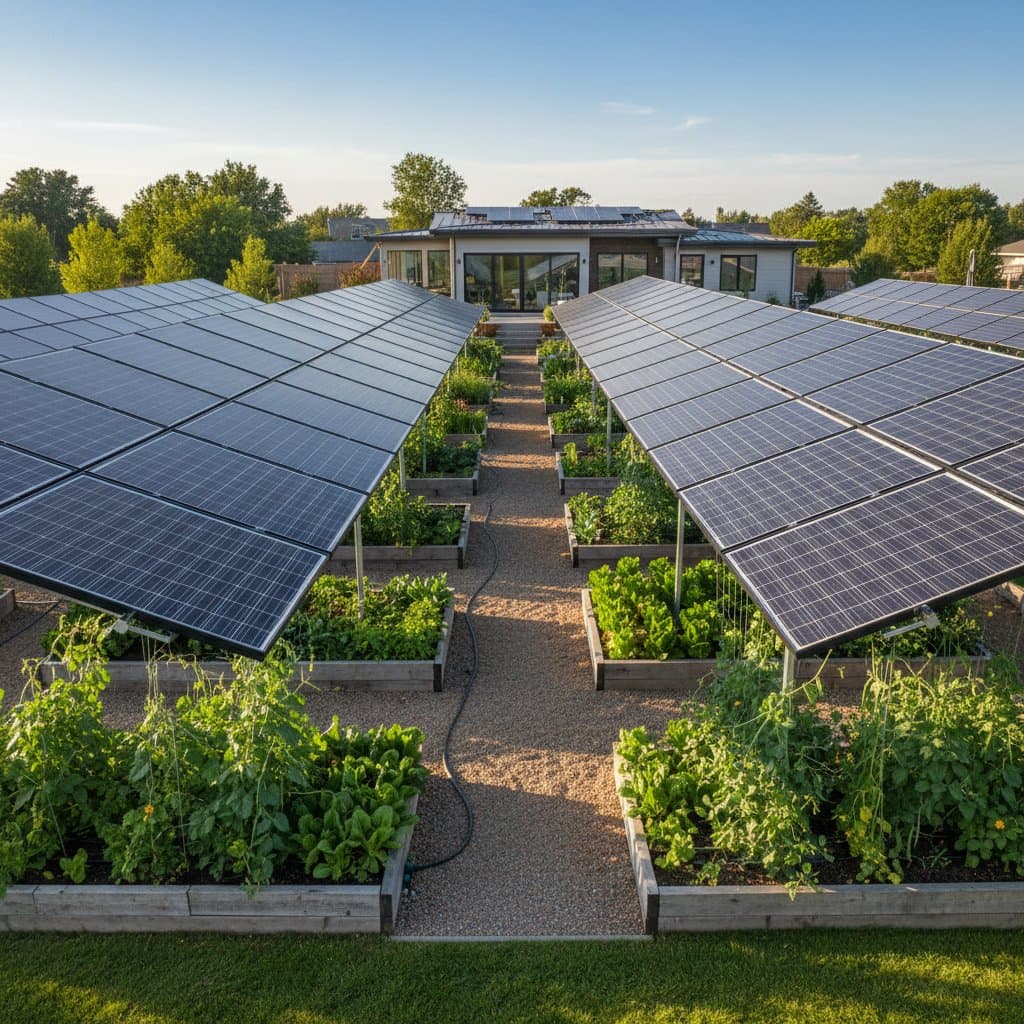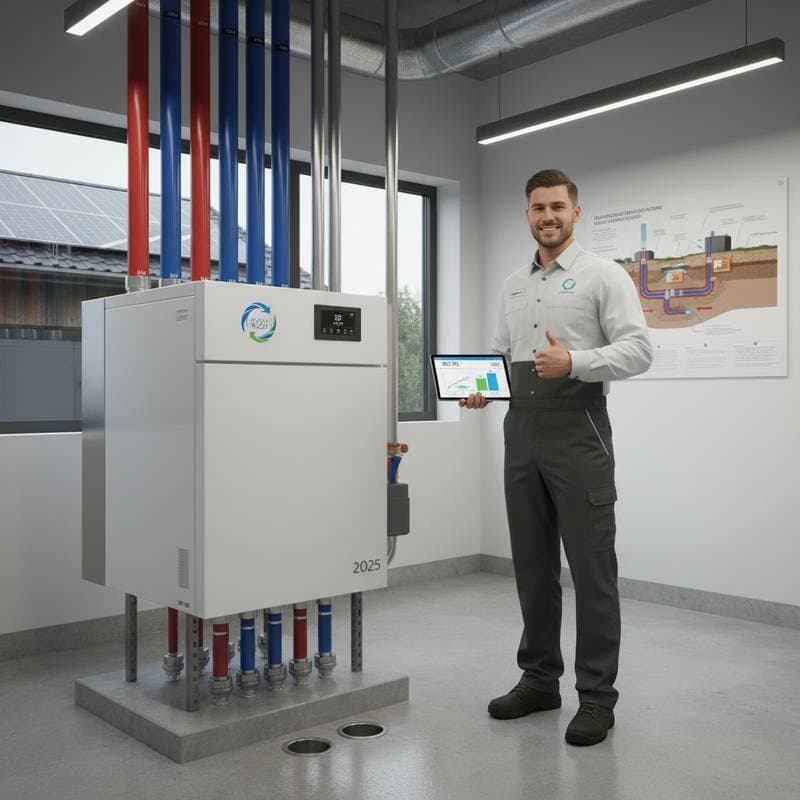Weighing the Value of Geothermal Cooling for $2,000 in Yearly Savings
Energy bills spike during hot months, prompting homeowners to seek effective solutions. Geothermal cooling, powered by ground-source heat pumps, promises substantial reductions in these costs. While the initial investment appears daunting, a closer examination of efficiency, durability, and incentives reveals whether this technology aligns with financial and environmental goals.
Essential Facts on Savings and Expenses
- Projected savings: Many users experience 30 to 65 percent lower energy use, equaling $1,500 to $2,000 in annual utility reductions.
- Initial investment: Systems cost $15,000 to $35,000, influenced by property size, ground conditions, and configuration.
- Performance edge: These units produce three to five units of heating or cooling per unit of electricity, surpassing traditional air conditioners that yield one to two units.
- Durability: Underground loops endure for 50 years or more, with indoor components lasting 20 years or longer.
- Sustainability impact: Deployment decreases greenhouse gas emissions through reduced power consumption and avoidance of refrigerant releases.
The Mechanics of Geothermal Cooling
Geothermal systems leverage the earth's consistent subsurface temperatures for efficient climate control. Soil a few feet below the surface holds steady warmth or coolness throughout the year. A ground-source heat pump circulates a fluid through buried pipes to absorb or release heat as needed.
During cooling operations, the system draws excess warmth from indoor air and deposits it underground. This process avoids the energy-intensive battles against outdoor heat waves that plague conventional units. As a result, the equipment operates with minimal strain, consuming less power for superior results.
Breaking Down Installation Expenses
Geothermal setups include distinct elements that determine overall pricing:
| Component | Description | Typical Cost Range |
|---|---|---|
| Ground loop | Buried pipes for heat exchange, either horizontal or vertical | $8,000–$20,000 |
| Heat pump unit | Indoor equipment that processes and distributes temperature | $4,000–$8,000 |
| Ductwork adjustments | Modifications to integrate with current systems | $1,000–$3,000 |
| Controls and wiring | Sensors, thermostats, and electrical connections | $500–$1,500 |
Regional variations and site conditions affect these figures. Vertical installations suit compact yards but increase drilling costs, while horizontal options demand more space yet prove more economical. Integrating with an existing setup often minimizes expenses on ducts and wiring.
Tax credits and rebates from federal or local programs can offset 20 to 30 percent of the total. These supports make the outlay more manageable when balanced against future gains.
Calculating the Path to $2,000 in Savings
Efficiency metrics underpin the potential for $2,000 annual reductions. The U.S. Department of Energy notes that standard high-efficiency air conditioners achieve a Seasonal Energy Efficiency Ratio of 20. Geothermal equivalents reach 35 to 50, delivering more cooling per kilowatt-hour.
Consider a home with $3,500 yearly heating and cooling expenses. A 55 percent efficiency improvement lowers this to $1,575, yielding $1,925 in savings. Across 10 years, savings accumulate to $19,250, amplified by rising energy rates. Over the full system life, returns exceed the upfront amount.
Durability and Upkeep Advantages
Longevity enhances the appeal of geothermal investments. The sealed polyethylene ground loop resists degradation and requires no maintenance for decades. The indoor heat pump demands basic servicing, such as filter replacements and coil inspections.
Annual upkeep costs $150 to $300, far below those for systems exposed to outdoor elements. This reliability preserves efficiency and avoids unexpected repairs, safeguarding projected savings.
Added Comfort and Ecological Gains
Beyond finances, geothermal provides serene and even indoor conditions. With components shielded from weather, operational noise remains negligible, offering quiet relief from typical condenser sounds.
Ecologically, these systems curb electricity use and ease reliance on coal or gas plants. The Environmental Protection Agency estimates up to 40 percent fewer carbon emissions versus traditional setups. Such impacts improve local air quality and support broader sustainability efforts.
Evaluating Geothermal Against Other Options
To assess the $2,000 savings potential, compare with alternatives:
| System Type | Average Installation Cost | Annual Energy Use | Typical Annual Savings | Expected Lifespan |
|---|---|---|---|---|
| Standard central AC | $5,000–$8,000 | High | Baseline | 12–15 years |
| High-efficiency air-source heat pump | $8,000–$12,000 | Medium | $800–$1,200 | 15–20 years |
| Geothermal heat pump | $15,000–$35,000 | Low | $1,500–$2,000 | 20+ years (pump) / 50+ years (loop) |
Geothermal demands higher entry costs but excels in efficiency and endurance. Payback occurs in 7 to 12 years, based on local rates, after which benefits continue unabated.
Site Assessment for Successful Installation
Several property elements influence geothermal feasibility:
- Land availability: Horizontal loops need yard space; vertical drilling accommodates tight areas at added expense.
- Soil properties: Clay or wet soils enhance heat transfer, while sandy types may complicate setup.
- Current systems: Compatible ducts or radiant floors simplify integration.
- Utility pricing: Elevated local rates accelerate cost recovery.
- Water resources: Open-loop designs using wells boost efficiency but demand regulatory clearance.
Engage a certified professional for a thorough evaluation. They simulate energy patterns and forecast personalized savings to confirm if $2,000 aligns with your situation.
Securing Funding and Rebates
Large upfront sums prompt exploration of financing. Green loans offer competitive rates, paired with utility rebates for verified installations. Federal tax credits and state programs routinely slash thousands from the bill, improving accessibility.
Steps to Implement Geothermal Savings
To realize lower bills and enhanced efficiency, initiate an energy audit to baseline your usage. Obtain detailed proposals from qualified installers, reviewing equipment specs, site work, and guarantees.
For long-term residents, the combination of reduced upkeep, reliable performance, and home value uplift often justifies adoption. Geothermal cooling suits properties with suitable conditions and high energy demands, frequently achieving the targeted $2,000 in yearly reductions.






